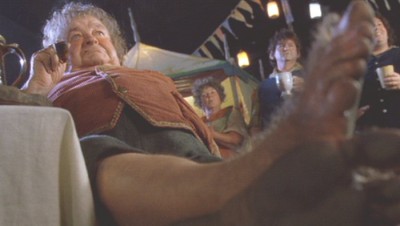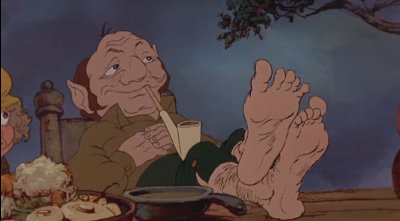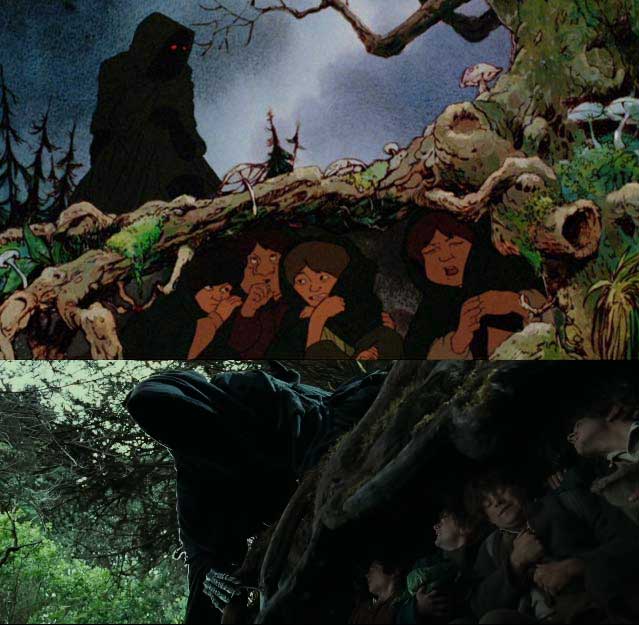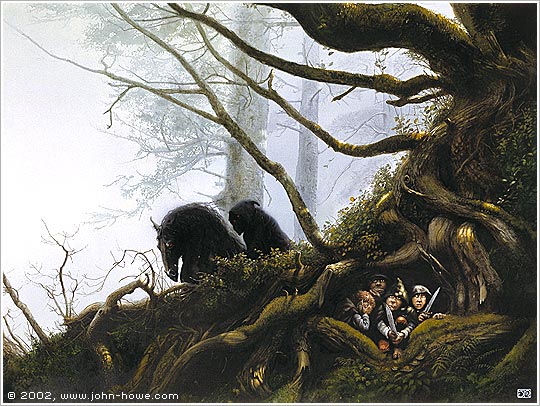Homage? Tip of the hat? Rip-off?
Quite simply, I was not the person he wanted to hear this from, however earnest. Bakshi had been waiting to hear this from someone else. Too late I realized this. I wanted our tangent to cover ‘Artists inspiring other Artists’ but his resentment came to the fore when I showed him that photo.
He professed:
“Peter Jackson never called me once to thank me for getting the rights … He was very … He never called me once about getting the rights. He never called me once to tell me he was doing the film. And now you’re showing me a picture of him with me seven years before … What does that mean? … The guy snuck up and took a picture of me — you took a picture of me today, I never saw you before. So the point is: Peter Jackson was very, what is the word, impolite to Ralph Bakshi. And he said once, somewhere, that I was his inspiration. He said it only once, one time somewhere. You read every interview he’s given, you don’t see it at all. So you want to stop that?”
Faced with his mercurial shift in temperament I chose my words carefully. “Well, I do see exact shots that are obviously an homage to your shots.”
He was quicker than quick: “Oh? What’s an homage? … What does the word homage mean?”
“Let’s define it!” I said. “Should it be an ‘homage?’ Should it be a ‘tip of the hat?’ Or is it a little bit something else?”
“It’s a rip-off…”
I jumped right to Everard Proudfoot as the best example of Jackson paying homage to him. Ringers know the scene well — Bilbo’s birthday speech, he runs a list of Shire family surnames — you know the rest. In the Director’s Commentary found on every Extended Edition of “The Fellowship of the Ring” you can hear Jackson saying:
My first introduction to ‘The Lord of the Rings’ was when I saw the Ralph Bakshi cartoon film in 1978. And even though our movie obviously is stylistically very different and the design is different; there is one shot which I regard as my homage to the cartoon. Because it did inspire me to want to read the book. And that’s the shot of Proudfoot shouting ‘PROUDFEET’ where I deliberately copied the angle that Ralph Bakshi used; which I thought was brilliant.
This acknowledgment is very straightforward. But it is abundantly clear that Bakshi’s expectation was for a personal communication from the next director who endeavored to adapt The Lord of the Rings, whomever that would have been. He’s a man with a strong ethic; call it an Old World Artist’s ethic, if you will.
He demands the same directness that he gives. A tête-à-tête was what Bakshi wanted.
He continued: “An homage is when you take something — and you want to cover it up … Leave me alone.”
I had always believed the textbook definition was: ‘Something done or given in acknowledgment of the worth of another.’
How honestly do we express the value of an artistic item by reusing it in another form? Is it disingenuous when an homage is used but not claimed?
Who is being inspired?
Though an “incomplete” film, Bakshi’s adaptation had wider influence than you’d guess. People cite many similarities between his version and Jackson’s — there’s even a site with shot-for-shot comparisons. This exercise doesn’t illuminate much, really, until you look at WHO was so strongly influenced by Bakshi. Take the shot of the Nazgûl hovering over the tree roots while the hobbits hide underneath:
The first impression is that Jackson copied the scene (and the camera angle) wholesale from Bakshi. Not quite. The fact is that Jackson hired well-known Canadian illustrator John Howe to work on his films, who once created this wonderful painting for the 1987 Tolkien Calendar, almost a decade after the release of Bakshi’s film:
On his website, Howe admits the influence:
This painting was inspired by the Bakshi movie, where the Hobbits cower under a tree root as the Black Rider seeks them. I thought it was the best scene in the movie, and it must have trod a path in my subconscious, as it certainly is nowhere to be found in ‘The Fellowship of the Ring’.






